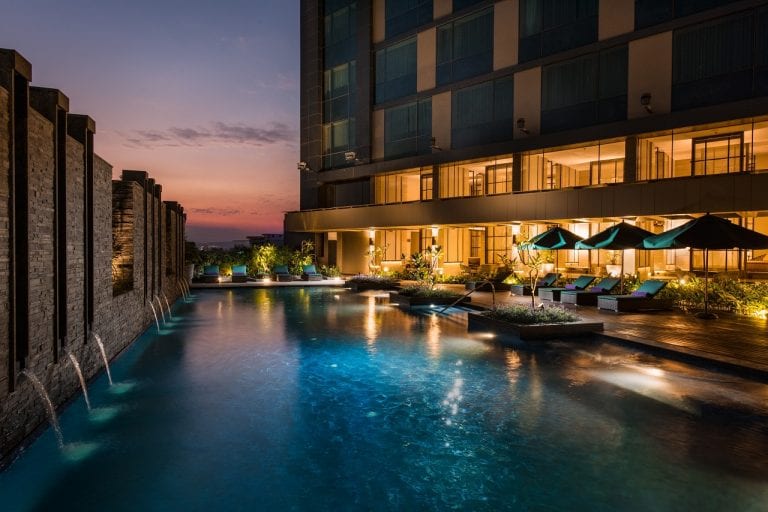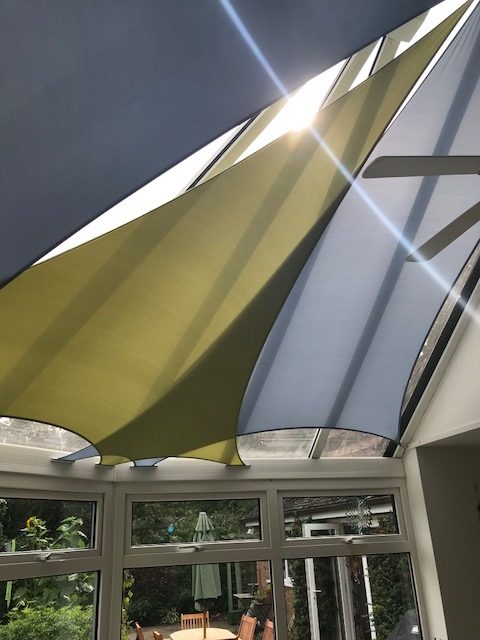My first reaction when I heard that the country’s first Conrad was opening in Pune, was, “Why Pune?” The India debut of Hilton Worldwide’s luxury flagship was much-awaited by its patrons and those who track the hospitality industry. Conrad had been planning its India foray for quite a while, on the back of its growing GDP and the interest from the local market in fresh hospitality experiences.
Pune, then, seemed a rather offbeat choice. Given the way the luxury market in Mumbai’s neighbouring city has evolved, the choice seems apt. A vibrant metropolis of academia, startups and the still-surviving Osho Ashram, Pune — a city settled by the Peshwas — is home to expats and people from across India who works in its automobile, hospitality, real estate and IT industries.
Conrad Pune was one of the first luxury hospitality properties to open in 2016, in its central business district. While it continues to host high-paying business travellers, it also attracts expats and locals with its eclectic experiences that blend business and pleasure, especially revolving around food, spa and the city itself.
Its sun-infused Coriander Kitchen hosts expansive brunches with live cooking centres and market-style displays. Its restaurant, Zeera, serves an innovative Malvani thali, which is coveted by both vegetarians (think slow-stewed aubergine stuffed with peanuts and different kinds of Maharashtrian chatnis) and meat lovers (traditional sukha mutton, Malvani chicken curry and Kolambi Shenga Batata or curried prawns with potatoes). And with its other food experiences — cooking masterclasses with chefs (at Koji, you can learn how to make sushi); its pastry chef hosts extensive baking sessions); mixology sessions with the head bartenders — there is a lot going on within the Art Deco-inspired portals of Conrad Pune.
The city is now home to several big hospitality brands such as J W Marriott and Hyatt Regency, besides boutique luxury properties like The Corinthians Resort and Club. Daniel Welk, Vice President Luxury and Lifestyle, Asia Pacific, Hilton Hospitality, analyses the Pune market as one dominated by “expats and locals in touch with global trends. To me, Pune seemed like a natural choice: it is maturing into a luxury market that attracts business travellers, who also love to experience the city, which increasingly offers several choices, including some non-traditional ones such as a pub or breweries crawl. I have seen it grow and evolve into a global destination.”
The Real Estate Industry Changed It All
Even before the hotels got here, it was the luxury real estate industry that recognised the potential of the city known more for its Maratha-era ruins, students and the Mercedes Benz Centre of Excellence in Chakan, the largest R&D centre for the carmaker outside of Germany. “Mercedes global team were regular visitors and they contributed a lot towards giving Pune some sort of gravitas as a serious business destination early on,” says Paul Salnikow, chairman, The Executive Centre, a company that runs a global network of centres, which provide flexible office space for entrepreneurs not looking to make capital investments at the start. “We opened in Pune because of the opportunities provided by the global brands, boundary-pushing innovation and diversity of businesses.”
Marque real estate brands seized the opportunity and Pune saw a flurry of development over the past five years. Yoo, the London-origin boutique luxury housing company, chose Pune as the first Indian city to debut in (the second was Mumbai). The exclusive 22 residences, brought to the city by Panchshil Developers, are designed by French designer Philippe Starck (known for his work with Italian design companies and residences across the world). YooPune, designed as a whimsical space, is now occupied by expats and Indians looking for a second home in the city.
“YOO Pune was designed as a paradise island, lost in the beauty of India’s old gardens. It’s a place where people can gather and feel more creative,” says Starck. “It reflected the community culture that existed in old neighbourhoods of Pune, even as it was global in design.”


